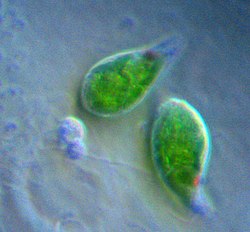Chromista structure
Autor/Urheber:
Thomas Cavalier-Smith
Attribution:
Das Bild ist mit 'Attribution Required' markiert, aber es wurden keine Informationen über die Attribution bereitgestellt. Vermutlich wurde bei Verwendung des MediaWiki-Templates für die CC-BY Lizenzen der Parameter für die Attribution weggelassen. Autoren und Urheber finden für die korrekte Verwendung der Templates hier ein Beispiel.
Shortlink:
Quelle:
Größe:
685 x 260 Pixel (107759 Bytes)
Beschreibung:
Contrasting membrane structre of plantae (left) and algal chromista. Plantae (a) originated by primary enslavement of a cyanobacterium to make plastids and Chromista (b, c) by secondary intracellular enslavement of a red algal plant cell. Both target nuclear-coded proteins to plastids by transit peptides (TPs) recognised by outer membrane (OM, blue) Toc receptors and to mitochondria (enslaved α-proteobacteria) by topogenic sequences recognised by OM Tom receptors. For clarity, Golgi shown only in c and peroxisomes and lysosomes omitted. a Cyanophora, from the earliest diverging plant phylum Glaucophyta. Plastid membrane topology is identical to cyanobacteria with thylakoids. The common ancestor of red algae and green plants (not shown) lost cortical alveoli (which grow by fusion of Golgi-derived vesicles), red algae and two green plant subgroups lost chloroplast envelope murein peptidoglycan, and green plants lost phycobilisomes and stack their thylakoids. b Cryptophytes retain the enslaved red algal nucleus (simplified to a tiny nucleomorph), starch, and cytosolic ribosomes within the periplastid space (PS), and phycobilins (shown in red but can be blue instead) in the thylakoid lumen; all other euchromists (haptophytes, Ochrophytina, not shown) lost these four components and stack their thylakoids in threes not pairs, but like cryptophytes retained the red algal plasma membrane as the periplastid membrane (PPM) and a periplastid reticulum (PR) here argued to be the relict trans-Golgi network (TGN) of the enslaved red alga and topologically distinct from the PPM. c Myzozoa lack periplastid ribosomes, phycobilins, and nucleomorph DNA; thylakoids are stacked in threes; PPM (present in Apicomplexa—red dashed line; lost in Dinozoa) and plastids are not within the rough ER. The original phagosome membrane (now epiplastid membrane, EpM) remains smooth and receives vesicles (V) containing nucleus-encoded plastid proteins from the Golgi. Dinozoa lack PR, but Apicomplexa have a likely homologue (not shown).
Lizenz:
Credit:
Fig. 3 at Kingdom Chromista and its eight phyla: a new synthesis emphasising periplastid protein targeting, cytoskeletal and periplastid evolution, and ancient divergences. In: Protoplasma 255, pages 297–357 (2018); doi:10.1007/s00709-017-1147-3
Relevante Bilder
Relevante Artikel
Komplexe PlastidenKomplexe Plastiden sind gekennzeichnet durch Membranhüllen, die anders als bei einfachen Plastiden aus drei oder mehr Membranen bestehen. Enthalten die Plastiden Chlorophyll, dann spricht man auch von komplexen Chloroplasten. Im Raum zwischen der zweiten und dritten Membran befindet sich in manchen Fällen ein rudimentärer eukaryotischer Zellkern, genannt Nucleomorph. Dies ist beispielsweise bei Cryptomonaden, Chlorarachniophyten und vielen Apicomplexa der Fall. .. weiterlesen





